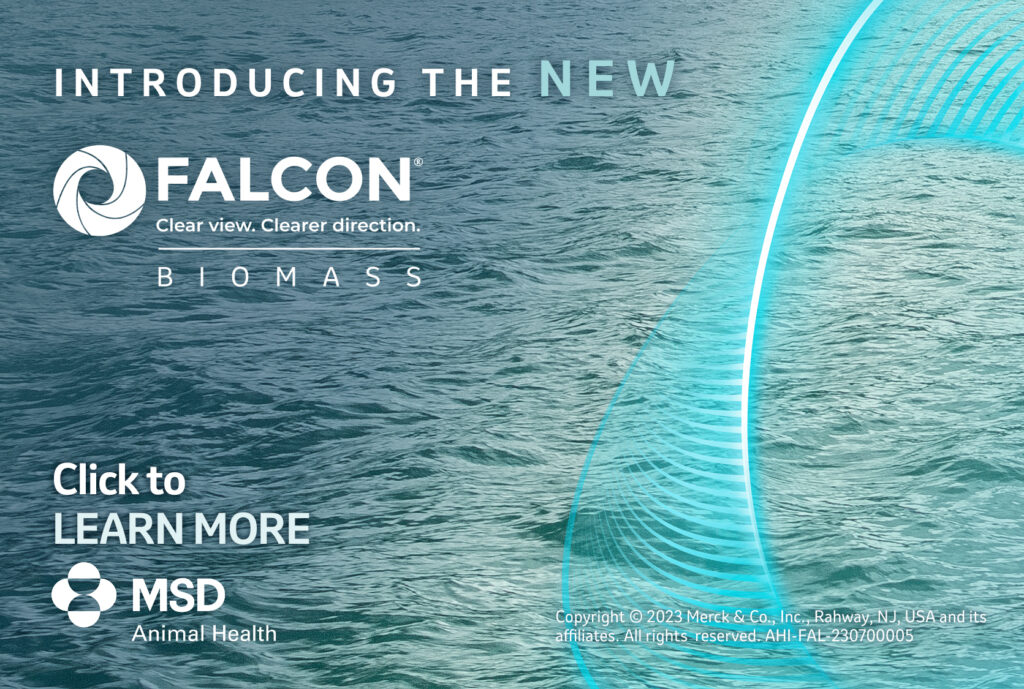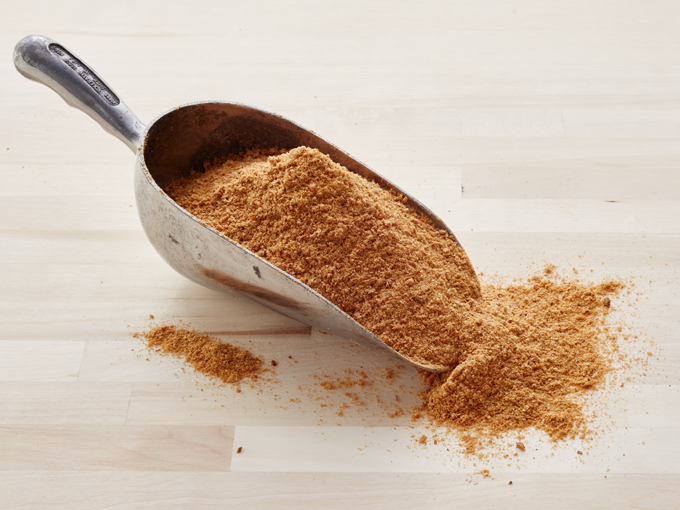Securing the Nutritional Value of Farmed Salmon: Veramaris O3D Model
This blog post features Veramaris, a Gold Sponsor of the 2024 Responsible Seafood Summit. We thank Veramaris for their support of the work GSA does to advance responsible seafood practices.
Omega-3 levels in salmon are a part of the nutritional quality that consumers expect. Now, with the Veramaris O3D model we have created a tool that helps to meet these expectations.
A recent survey indicates that 69% of seafood consumers state the health and nutritional benefits as their main reason for eating seafood. Omega-3 fatty acids, particularly EPA and DHA, are crucial for human health, providing benefits such as improved heart health, joint health, immune response, and cognitive function. Therefore, based on cardiovascular risk considerations for European adults, the dietary recommendation for EPA and DHA is between 250 and 500 mg/day and one portion of oily fish per week. To achieve this, it means that every portion of salmon should contain at least 1.75g of EPA and DHA. Farmed salmon is an excellent source of Omega-3, however, a study found significant variation in the levels of EPA and DHA in salmon fillets from supermarkets across both Scotland and Norway, many of which did not contain enough to meet the weekly recommended intake.
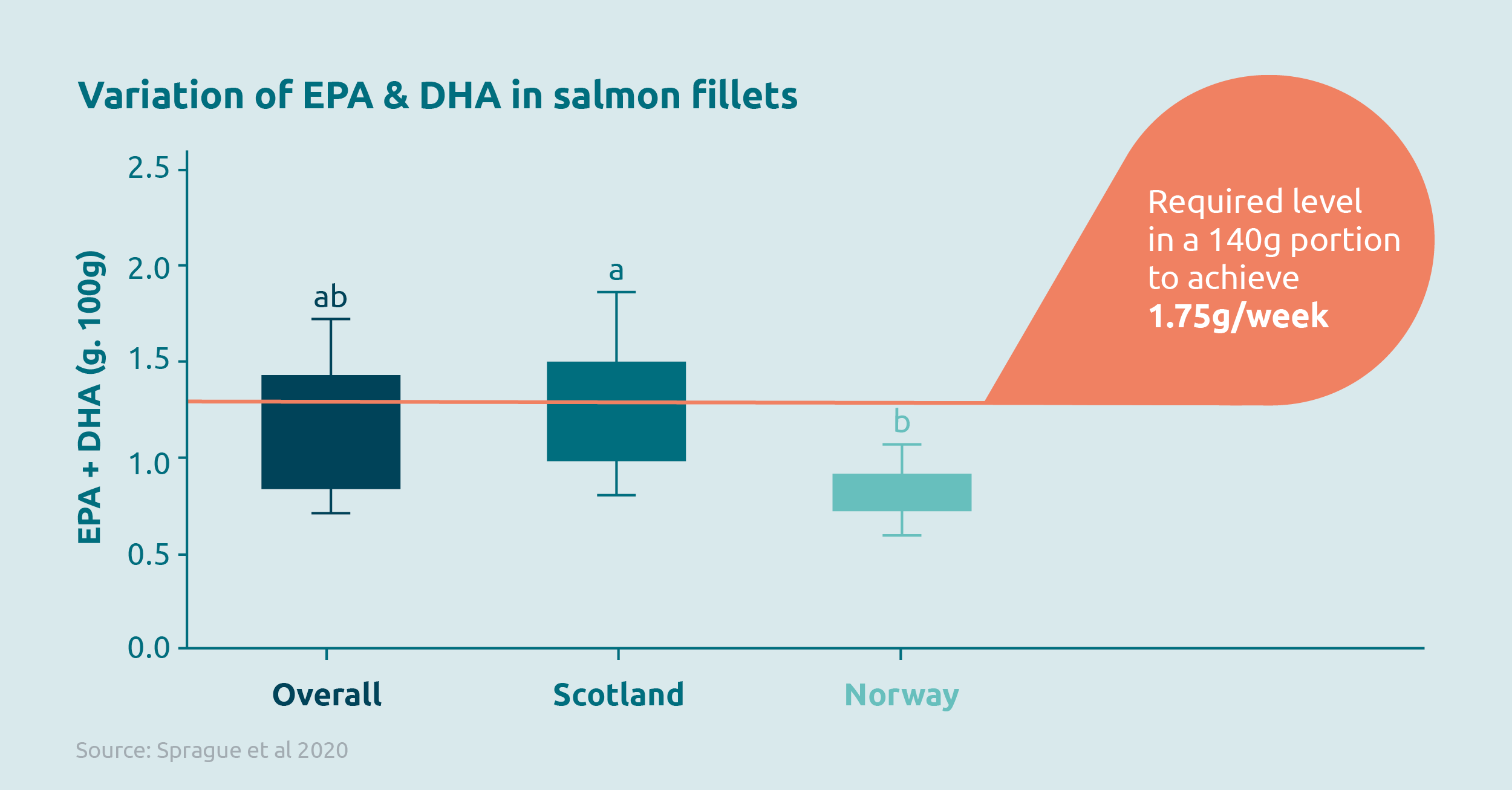
Omega-3 Deposition Model
So how can we ensure that every portion of farmed salmon delivers against consumers’ expectations for nutritional quality? Veramaris has developed the Omega-3 Deposition (O3D) Model. This tool makes the connection between EPA and DHA content in fish feeds and how this is deposited in the final fillet to improve the consistency of Omega-3 levels in farmed salmon.
The model can be used to approach the problem from two directions. Firstly, it helps determine the EPA and DHA levels required in salmon feed to meet a target level in the fillet. Secondly, it helps predict the deposition of EPA and DHA in the fillet based on known levels in the feed. Users can create multiple scenarios to evaluate current practices and set future nutritional targets. This model is the first of its kind and we hope to help the industry achieve consistent EPA and DHA levels in salmon to safeguard the nutritional profile of seafood and ensure consumers enjoy the associated health benefits.
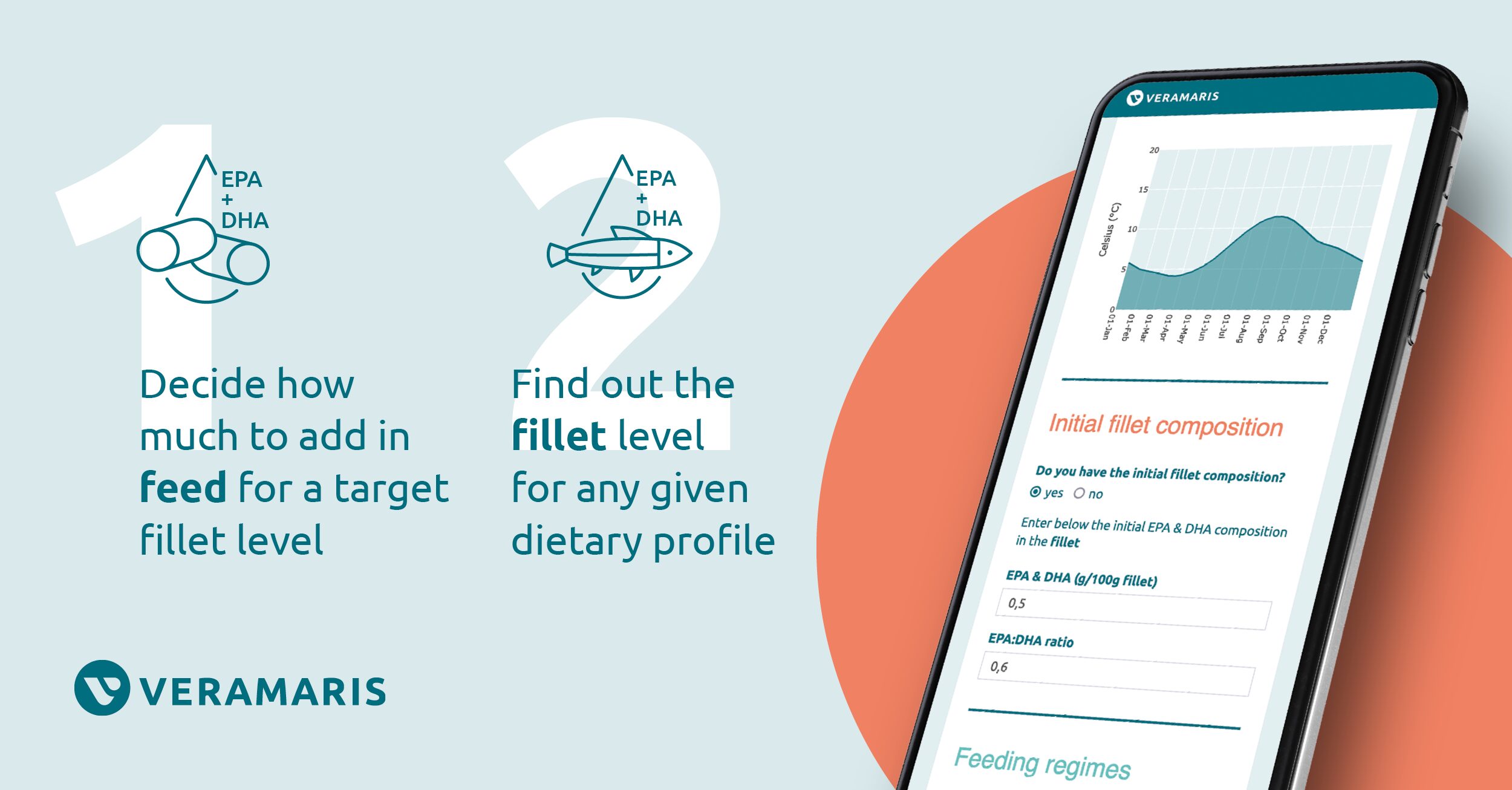
How Does the Model Work?
The O3D Model is based on research that enabled Veramaris to understand the relationships between lipid distribution, fatty acid deposition, and the factors influencing this, such as feed formulation. This research confirmed that EPA and DHA deposition in salmon fillets can be predicted as they experience a dilution effect where fish utilize some of the fatty acids for basic biological processes, such as growth, and deposit the remainder in the fillet.
Historically, the aquaculture industry used separate models for nutrient demand and nutrient flow. The innovative O3D Model is unique in that it integrates both approaches, combining a growth and fatty acid deposition model. Grounded in robust, peer-reviewed data and validated by lab-based and commercial farm trials, it offers a scientific tool to ensure the nutritional quality of salmon.
Benefits for the Whole Value Chain
The O3D Model offers significant benefits for stakeholders throughout the seafood value chain. Feed millers benefit by designing effective feed formulations that support the health of the fish and ensure the provision of nutritious seafood. For farmers, it provides a tool to manage Omega-3 levels and ensure consistency in their fish, thereby meeting consumer expectations for nutritional quality. Retailers can use the model to understand and meet Omega-3 specifications, enhancing labeling accuracy and building consumer trust. Finally, consumers gain confidence knowing that the Omega-3 content stated on packaging is accurate, assuring them of the nutritional value of their salmon products.
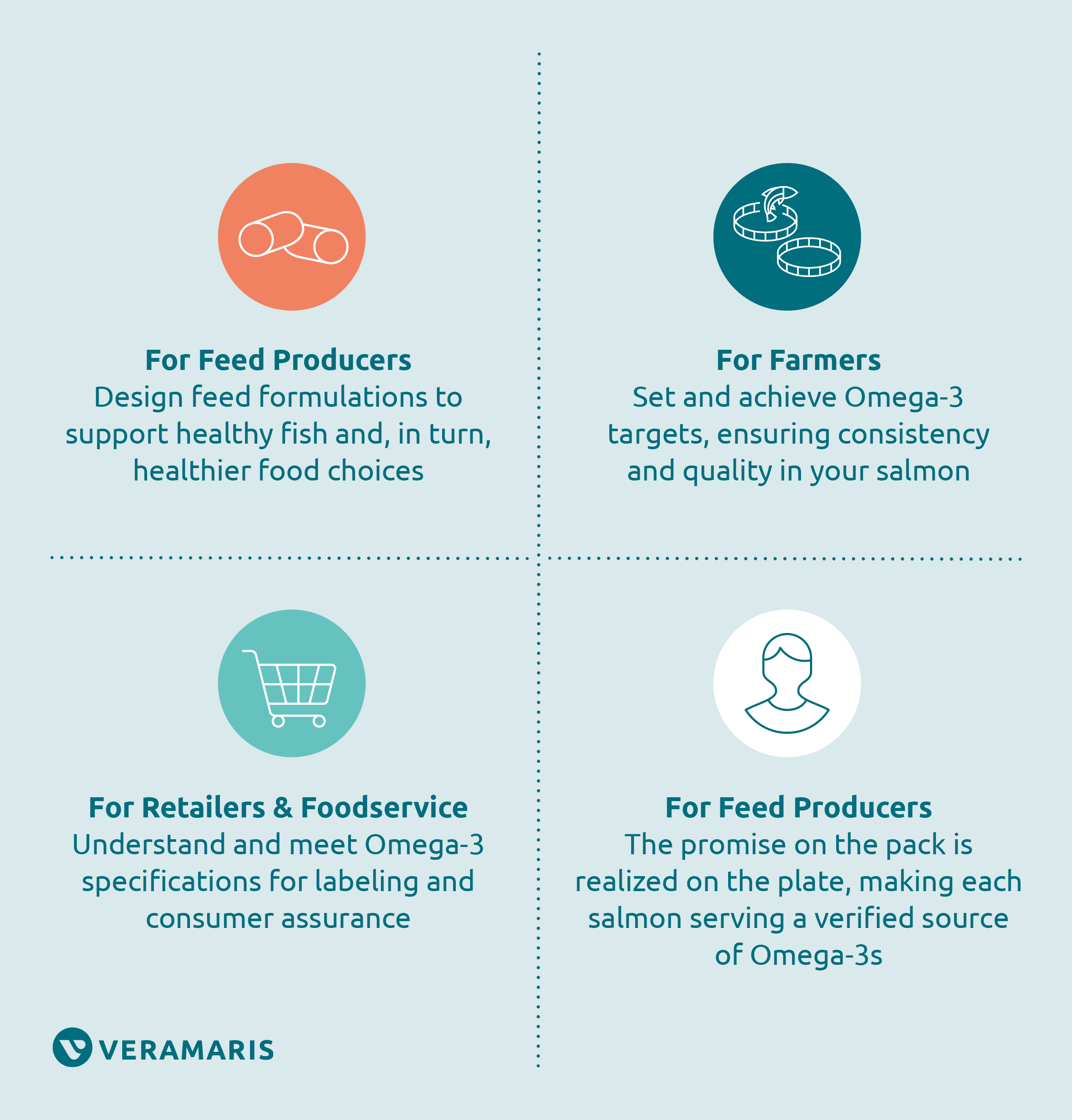
The O3D Model by Veramaris represents a significant advancement in safeguarding the nutritional quality of farm-raised salmon. By managing EPA and DHA levels, the industry can better meet consumer expectations and increase confidence in global aquaculture as a reliable system for producing healthy seafood. This initiative underscores a commitment to improving the nutritional profile of salmon, ultimately benefiting farmers, retailers, feed millers, and consumers alike.
In summary, the O3D Model is an innovative and robust tool that helps the seafood industry deliver consistent and reliable Omega-3 levels in salmon, supporting health and nutritional benefits for people all over the world.
Veramaris is committed to supporting the growth of aquaculture by offering the world’s richest source of Omega-3 EPA & DHA through its ASC-MSC-certified algal oil for fish and shrimp feed.

